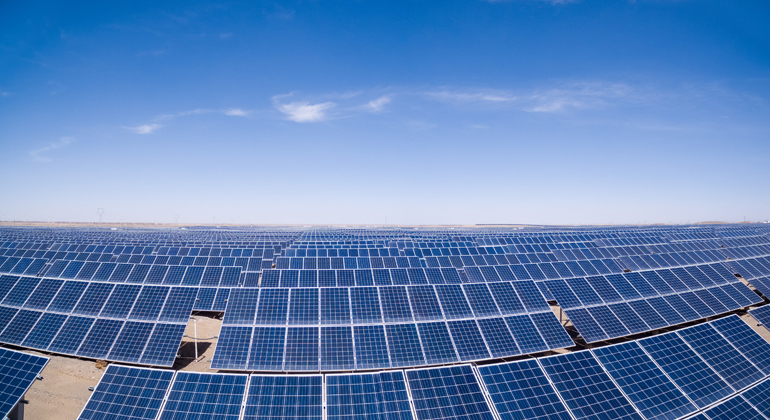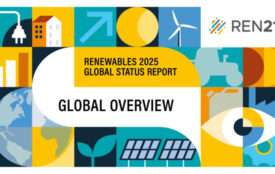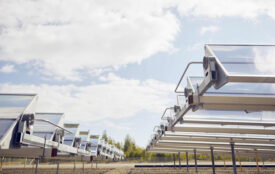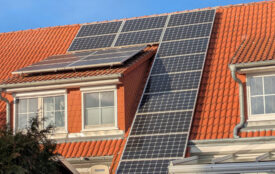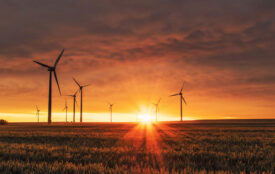Record Growth in Renewables, but Progress Needs to be Equitable
Power capacity additions reached a new benchmark of 473 gigawatts in 2023, but many countries are cut off from the benefits of energy transitions.
Renewable Capacity Statistics 2024 released by the International Renewable Energy Agency (IRENA) shows that 2023 set a new record in renewables deployment in the power sector by reaching a total capacity of 3 870 Gigawatts (GW) globally. Renewables accounted for 86% of capacity additions; however, this growth is unevenly distributed across the world, indicating a trend far from the tripling renewable power target by 2030.
The 473 GW of renewables expansion was led once again by Asia with a 69% share (326 GW). This growth was driven by China, whose capacity increased by 63%, reaching 297.6 GW. This reflects a glaring gap with other regions, leaving a vast majority of developing countries behind, despite massive economic and development needs. Even though Africa has seen some growth, it paled in comparison with an increase of 4.6%, reaching a total capacity of 62 GW.
IRENA Director-General, Francesco La Camera said, “This extraordinary surge in renewable generation capacity shows that renewables are the only technology available to rapidly scale up the energy transition aligned with the goals of the Paris Agreement. Nevertheless, the data also serves as a telltale sign that progress is not moving fast enough to add the required 7.2 TW of renewable power within the next seven years, in accordance with IRENA’s World Energy Transitions Outlook 1.5°C Scenario.”
“Policy interventions and a global course-correction are urgently needed.”
Policy interventions and a global course-correction are urgently needed to effectively overcome structural barriers and create local value in emerging market and developing economies, many of which are still left behind in this progress. The patterns of concentration in both geography and technology threaten to intensify the decarbonisation divide and pose a significant risk to achieving the tripling target.
Francesco La CameraDirector-General
For China, solar and wind’s increasing competitiveness against coal and gas power generation became the key driver of renewable power development. Meanwhile in the EU, enhanced policy focus and heightened energy security concerns have become the main catalysts for the rapid growth, apart from the increasing cost-competitiveness of renewables against fossil fuel alternatives.
Other regions that saw significant expansion were the Middle East at 16.6% increase and Oceania at 9.4% increase. The G7 countries as a group increased by 7.6%, adding 69.4 GW last year. The G20 nations on the other hand increased their capacity by 15.0%, reaching 3084 GW by 2023. However, for the world to reach over 11 TW for the tripling target requires the G20 members alone to reach 9.4 TW of renewable power capacity by 2030.
With solar energy continuing to dominate renewable generation capacity expansion, the report underscores that the growth disparity did not only affect geographical distribution but also the deployment of technologies. Solar accounted for 73% of the renewable growth last year, reaching 1 419 GW, followed by wind power with 24% share of renewable expansion.
IRENA’s 1.5°C Scenario recommends a massive scaling up of financing and strong international collaboration to speed up the energy transition, putting developing countries as key priority. Investments are needed in power grids, generation, flexibility and storage. The pathway towards tripled renewable power capacity by 2030 requires a strengthening of institutions, policies and skills.
Technology highlights:
- Solar energy: solar photovoltaics increased by 345.5 GW last year, while concentrated solar power increased by 0.3 GW. China alone added 216.9 GW to the total expansion.
- Renewable hydropower (excluding pumped hydro): capacity reached 1 270 GW, with expansion lower than in recent years. Australia, China, Colombia and Nigeria added more than 0.5 GW each.
- Wind energy: wind grew at an increased rate of 13%, following behind solar energy. By the end of 2023, total wind capacity reached 1017 GW. Expansion was dominated by China and the United States.
- Bioenergy: expansion continued to slow with a 3% increase, adding 4.4 GW compared to 6.4 GW in 2022. After China, major increases took place in Japan, Brazil and Uruguay.
- Geothermal energy: geothermal energy increased by a very modest 193 MW, led by Indonesia.
- Off-grid electricity: capacity – in regions outside Europe, North America and Eurasia – grew by 4.6%, reaching 12.7 GW, dominated by off-grid solar energy which reached 5 GW by 2023.
- Read the full Renewable Capacity Statistics 2024 including the highlights, here.
- Read more on the Systemin changes needed to triple renewable power capacity by 2030.
